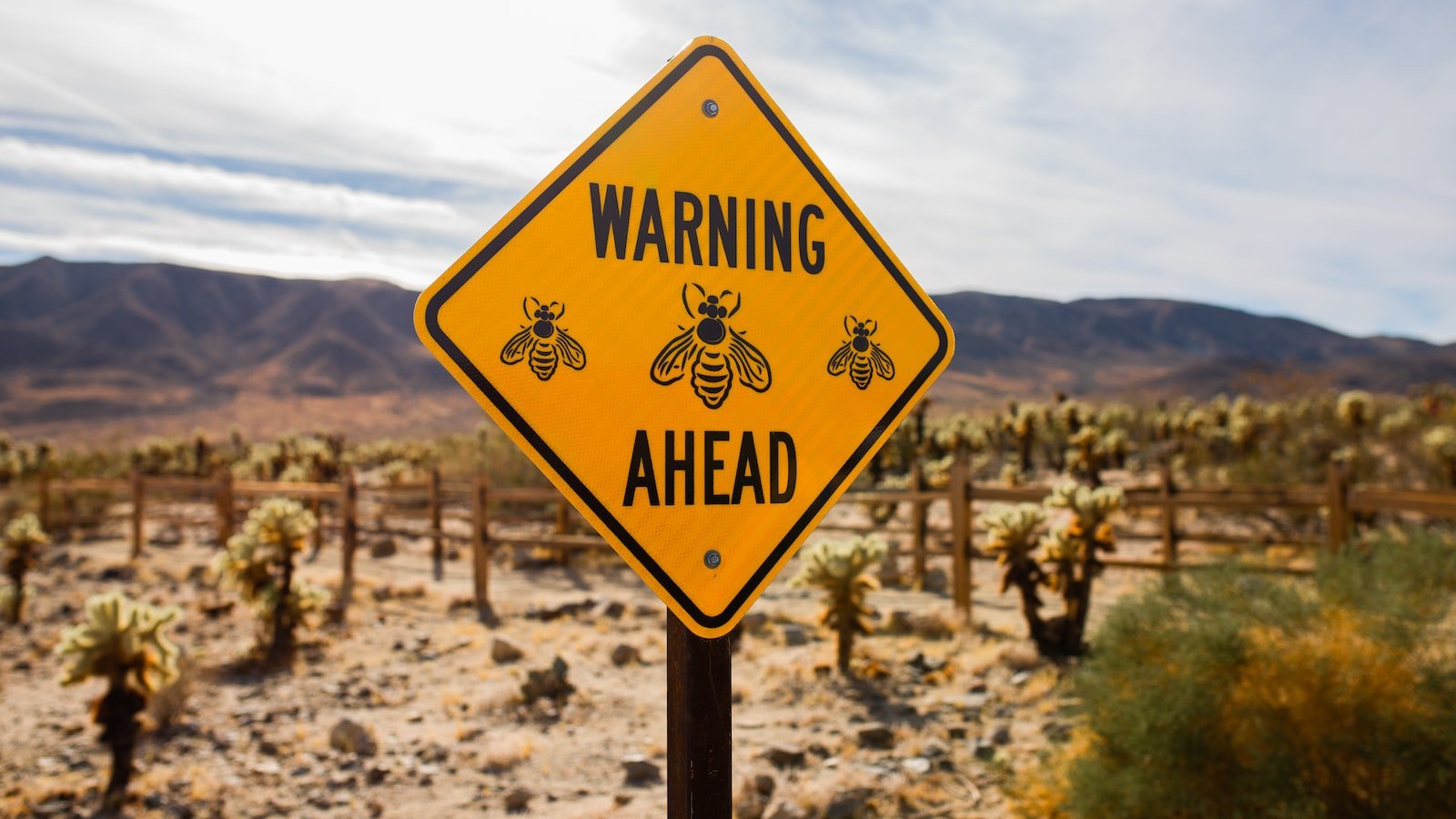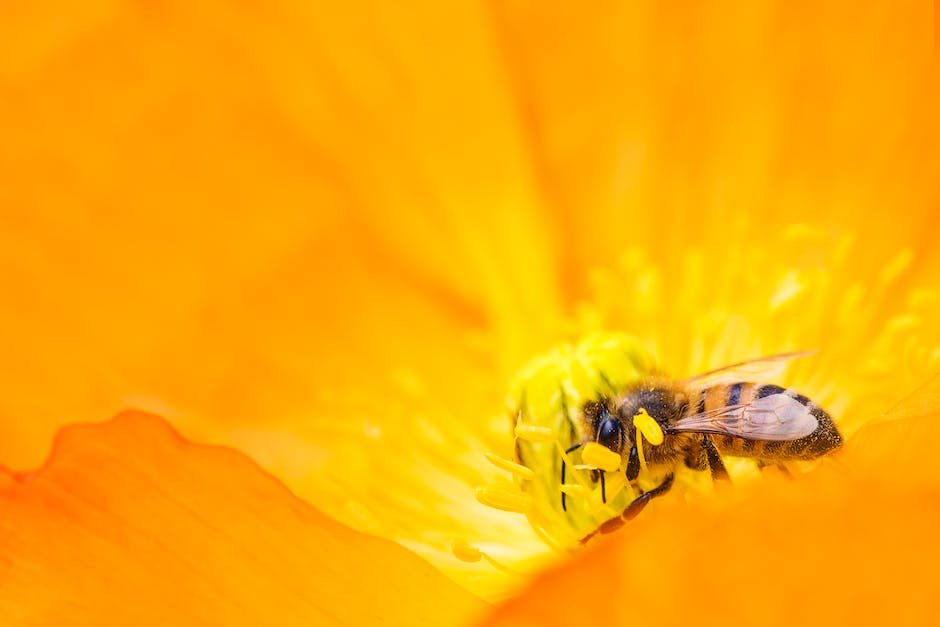As the sun begins its ascent, painting the sky with hues of orange and pink, a mesmerizing symphony takes flight amidst the vibrant blossoms. The delicate buzzing of bees fills the air, intertwining with the gentle whispers of wind to create an ethereal melody. Have you ever stopped to wonder what secrets lie within these melodic vibrations? How do these tiny creatures produce such harmonious hums that seem to resonate with nature itself? Welcome to the enchanting world of bee humming, where science meets music, and understanding intertwines with wonder. In this musical guide, we embark on a journey to decipher the hidden language of bees and unravel the symphony that echoes through their wings. So, let us delve deep into the realm of bee humming, where melodies buzz and nature sings its sweetest tune.
Table of Contents
- The Melodic Language of Bees: Decoding the Musical Vibrations
- Connecting the Dots: Unveiling the Hidden Meanings in Bee Humming
- Unlocking the Tempo: Understanding the Rhythmic Patterns of Bee Communication
- Shaping a Harmonious Garden: Incorporating Music to Enhance Bee Interaction
- Tune Into Nature’s Symphony: Utilizing Sound Therapy to Aid Bee Well-being
- Q&A
- The Way Forward

The Melodic Language of Bees: Decoding the Musical Vibrations
Deep within the world of bees lies a hidden language that has captivated scientists and nature enthusiasts for centuries—bee music. These industrious insects not only communicate through chemical pheromones, but also through intricate vibrations that form a melodic symphony within their hives. While these musical vibrations have long been observed, their true meaning and complexity have remained a mystery, until now.
Researchers have recently made groundbreaking discoveries in decoding the melodic language of bees. Through careful analysis of the vibrations produced during different hive activities, a pattern started to emerge. It seems that bees possess an incredible ability to convey a multitude of messages through variations in pitch, duration, and rhythm. These signals may serve as a way to instruct fellow bees about the location of nectar sources, coordinate the defense of their colony, or communicate warnings about potential threats.
As the scientific community delves deeper into this fascinating world of bee music, it opens up possibilities for understanding the complex social dynamics and resilience of these remarkable creatures. Unlocking the secrets of the melodic language of bees not only expands our knowledge of the natural world, but also highlights the interconnectedness of all living beings and the beauty that lies within even the tiniest harmonies.

Connecting the Dots: Unveiling the Hidden Meanings in Bee Humming
The intricate art of bee humming is not merely a symphony of buzzing wings, but a language of hidden meanings waiting to be deciphered. As we delve into this enigmatic realm, we embark on a journey to connect the dots and unlock the secrets that lie within.
One can’t help but be amazed at the level of complexity bees employ when communicating with each other through their melodious vibrations. It’s a conversation that surpasses our comprehension, yet holds immense significance within their world. Bee humming serves various purposes – from signaling danger to providing directions to fruitful sources of nectar.
Unveiling the hidden meanings behind bee humming requires an open mind and an astute eye. While there are no definitive translations, certain patterns have been observed. For instance, a high-pitched hum accompanied by rapid vibrations tends to signal a close-by food source. In contrast, a low, steady hum indicates a more cautious approach, often signaling potential threats lurking nearby.
Through patient observation and analysis, we can begin to uncover the nuanced language of bees and appreciate their sophisticated means of communication. As we connect the dots and discover the underlying meanings in their enchanting humming, an entire world of interwoven messages opens up before our very eyes, highlighting the remarkable intelligence of these industrious pollinators.
- Precision: Bee humming is not a mere flutter of wings but a meticulously crafted method of conveying messages, demonstrating the bees’ remarkable precision and attention to detail.
- Harmony in Dissonance: The diversity of bee humming patterns showcases the harmony that can emerge from seemingly chaotic buzzing, reminding us of the beauty that can be found in the midst of complexity.
- Unspoken Warnings: In the subtle variations of their hum, bees transmit warnings that can protect their colony from impending danger, proving their ability to safeguard their collective well-being.
So let us immerse ourselves in the captivating universe of bee humming and uncover the marvelous hidden meanings that await our exploration.

Unlocking the Tempo: Understanding the Rhythmic Patterns of Bee Communication
In the vibrant realm of the bee kingdom, every dance, buzz, and tremor holds a mysterious significance. These tiny creatures have mastered the art of communication through intricate rhythmic patterns, revealing a world of secrets hidden to the unaware observer. Drawing us into their captivating realm, bees use tempo as a powerful tool to express vital information, from locating nectar-rich flowers to sharing directions with their hive mates. Unlocking the enigma behind these rhythmic patterns not only sheds light on the remarkable intelligence of bees but also unravels the delicate balance inherent in their complex social structure.
Within these rhythmic patterns, an astonishing world of bee language unfolds. Bees produce various sounds, vibrations, and dances that can be deciphered as a code understood by their brethren. The tempo forms the backbone of this communication, creating a symphony of signals that guide the hive’s activities. The pulsating beat facilitates the conveyance of nuanced information, such as the distance and direction of a discovered food source or the location of a new potential nesting site. The bees’ rhythmic language serves as an intricate GPS system, allowing each member to coordinate its efforts and ensure the collective survival of the entire colony.
To decode the tempo of bee communication, researchers have unveiled an astonishing world of meaning-rich patterns. By meticulously studying the duration, frequency, and intensity of vibrations and sounds produced by bees, fascinating insights have emerged. It’s been discovered that certain rhythmic pulsations signal high-quality food sources, while others indicate potential dangers lurking in the environment. These rhythmic patterns not only allow bees to effectively communicate but also showcase their adaptability and resilience in the face of the ever-changing natural world.

Shaping a Harmonious Garden: Incorporating Music to Enhance Bee Interaction
In an effort to cultivate a flourishing ecosystem, garden enthusiasts have been exploring innovative ways to engage with nature. One intriguing method gaining popularity is incorporating music into the garden to enhance bee interaction. By creating a harmonious environment through sound, we can encourage these vital pollinators to thrive and contribute to the overall vibrancy of our gardens.
Music has been known to have a profound effect on various living organisms, and bees are no exception. Here are some compelling ways in which music can be used to entice and captivate these buzzing visitors:
- Rhythmic melodies: Just as humans are drawn to an infectious beat, bees are naturally attracted to rhythmic patterns. By playing gentle tunes with consistent beats, such as classical or ambient music, we can create an inviting atmosphere that encourages bees to explore and interact with the plants.
- Frequency mimicry: Bees communicate through vibrations, so playing music that replicates their buzzing frequency can establish a sense of familiarity and connection. Soft instrumental sounds or nature-inspired tunes can help bridge the gap and foster a harmonious relationship between bees and their surroundings.
- Floral serenades: Tailoring the music selection to match the blooming season can greatly enhance bee engagement. By playing melodies that mimic the fragrant scent of the flowers in bloom, we can entice bees to visit our gardens and indulge in the nectar-rich blossoms.
In conclusion, creating a peaceful haven for bees through the power of music can offer a unique and enchanting experience for both the garden and its visitors. By utilizing rhythmic melodies, frequency mimicry, and floral serenades, we can shape a garden that not only delights the senses but also promotes a thriving ecosystem. Let the harmonious sounds guide these indispensable pollinators towards a symbiotic relationship with nature.
Tune Into Nature’s Symphony: Utilizing Sound Therapy to Aid Bee Well-being
In the harmonious realm of nature, every element plays a vital role, including the gentle hum of the bees. These incredible creatures are not only essential for the ecological balance but are also known for their astonishing ability to produce honey and pollinate countless plant species. However, in today’s fast-paced world, bees face numerous challenges, including pesticide exposure, habitat loss, and climate change. As guardians of these buzzing wonders, it is our responsibility to explore innovative methods to support their well-being.
One such method that has gained momentum is the intriguing field of sound therapy for bees. Just like humans, bees respond to sound and vibrations, although their hearing range is quite different. By exposing bees to specific frequencies of sound, it is believed that we can positively influence their behavior, resilience, and even their immune systems.
Research has shown that certain sounds emitted by plants and the surrounding environment can have a profound effect on bee colonies. These sounds include the gentle rustling of leaves, trickling water, and melodic bird songs. By incorporating these natural sounds into beekeeping practices, apiarists hope to create an environment that is soothing and stress-free for the bees, enhancing their well-being and overall productivity.
Sounds that are commonly used in sound therapy for bee well-being:
- Plant vibrations: The resonating sounds produced by flowers and plants communicate important information to bees and can help them navigate more efficiently.
- Water sounds: The gentle trickling of water is known to create a calm and tranquil atmosphere for bees, reducing stress and promoting relaxation.
- Bird songs: The melodious tunes of birds not only enhance the overall ambiance but also provide a sense of security and encouragement for the bees.
While sound therapy for bees is a relatively new concept, its potential benefits are both fascinating and promising. By tuning into nature’s symphony and utilizing sound therapy techniques, we can provide a nurturing environment that not only supports the well-being of bees but also contributes to the preservation of our delicate ecosystem. Let us embark on this journey of harmonizing with nature and safeguarding these incredible pollinators.
Q&A
1. What is the significance of bee humming in the natural world?
Bee humming serves as a unique form of communication among bees, helping them coordinate hive activities such as foraging and defending their territory. It’s an essential element in their complex dance language that allows bees to share vital information with each other.
2. Can bee humming be interpreted as a form of music?
In a way, yes! While bee humming may not produce catchy tunes like human music does, it carries rhythmic patterns and specific frequencies that can be considered musical. By listening closely to the sounds produced by bees, we can unravel the hidden melody of their hive.
3. How can understanding bee humming benefit beekeepers?
Understanding bee humming can help beekeepers better assess the overall health and behavior of a beehive. By analyzing the changes in humming patterns, they can determine if the bees are experiencing stress, disease, or even undergoing a transition like swarming.
4. Are there specific techniques to decipher bee humming?
Yes, beekeepers and researchers employ various techniques to understand bee humming. Some use specialized microphones to record the sounds, while others use spectrograms to visualize and study the frequency patterns. Additionally, observing the bees’ body movements and the dance language they perform alongside humming can provide further insights.
5. Is it possible for humans to replicate bee humming?
While humans cannot naturally produce the same humming sounds as bees, some experiments have recreated similar frequencies using musical instruments. These synthetic bee hums aim to help humans perceive and connect with the intricate melodies of the bees, increasing our understanding of their vibrant world.
The Way Forward
As we bid adieu to this harmonious journey into the enchanting world of bee humming, may the buzzing melodies linger in your ears and spark a newfound appreciation for these tiny, yet awe-inspiring creatures. Like a symphony of nature, the rhythmic vibration of their wings serves as a mesmerizing soundtrack to the dance of life in our gardens and meadows.
In this musical guide, we have unearthed the secrets of decoding their melodious language, unraveling the intricate nuances of their buzzing symphony that only a keen ear can truly fathom. From the delicate harmonies of foraging bees to the energetic cadences of alarm calls, we have delved into the intricate craftsmanship that makes each hum a unique composition.
As our ears become attuned to their subtle melodies, let us not only revel in the beauty of their enchanting songs but also take a moment to reflect on the broader message they convey. In harmony with nature’s orchestra, bees signify the delicate interplay between species, reminding us of the profound interconnectedness that sustains our planet.
So, dear reader, embrace the symphony of the bees, letting their melodious hum be a conduit to a deeper connection with the natural world. As you embark on your adventures, from blooming fields to urban gardens, may you always carry this newfound understanding and appreciation for the exquisite gift of bee humming.
As we conclude this musical odyssey, let us remember that the true melody lies not only in the notes themselves but in the profound unity they create. Like bees in a hive, each note coming together can create a harmonious masterpiece that reverberates through our souls, reminding us of the beauty that surrounds us every day.
Farewell as we depart from this musical realm of bee humming, but let the echoes of their songs linger, forever igniting our hearts with curiosity and reverence for the symphony of nature. Until we meet again, may your ears remain open to the magical hums that conceal remarkable tales, waiting to be discovered amidst the flowers and the wind.
As an affiliate, my content may feature links to products I personally use and recommend. By taking action, like subscribing or making a purchase, you’ll be supporting my work and fueling my taco cravings at the same time. Win-win, right?
Want to read more? Check out our Affiliate Disclosure page.